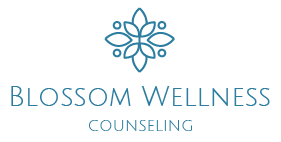Blog
Blog

The Role of Breath in Body Communication
Breathing is something we often take for granted. After all, it’s automatic. But beyond keeping us alive, the way we breathe can reveal what we’re feeling, help us understand ourselves better, and even shift our emotional state in the moment. Breath is one of the most powerful tools in body communication, a silent messenger between our inner world and the outside world.
Let’s explore how breathing patterns act as emotional indicators, how to use breath to regulate mood and stress, and a few simple breathing exercises to help you reconnect with yourself.
Breathing Patterns as Emotional Indicators
Our breath responds instantly to what’s happening in our minds and bodies. Think about it:
When we’re anxious, our breathing often becomes shallow and rapid.
When we’re calm, our breath tends to be slow and deep.
When we’re excited, we may take quick, short breaths without even realizing it.
This is because our breathing is directly linked to the autonomic nervous system. The sympathetic branch (our “fight or flight” mode) speeds up our breathing, while the parasympathetic branch (our “rest and digest” mode) slows it down.
Paying attention to your breathing patterns can help you gather clues about your emotional state even before you’ve fully registered how you feel.
Common Emotional Breathing Patterns:
Shallow chest breathing – often linked to anxiety, fear, or stress.
Holding the breath – sometimes happens when we’re bracing for something unpleasant or trying to suppress emotions.
Sighing frequently – can signal frustration, sadness, or a subconscious attempt to release tension.
Deep, rhythmic breathing – usually associated with calm, relaxation, and mindfulness.
How to Use Breath to Regulate Mood and Stress
The beauty of breath is that it’s both automatic and controllable. Unlike your heartbeat, you can consciously change your breathing pattern at will and in doing so, you can send signals back to your brain to shift your emotional state.
Here’s how breath can help regulate mood and stress:
1. Switching from “fight or flight” to “rest and digest” – Slow, deep breathing activates the vagus nerve, which stimulates the parasympathetic nervous system. This tells the body it’s safe, lowering stress hormones and reducing muscle tension.
2. Creating mental space – Conscious breathing draws attention away from racing thoughts, grounding you in the present moment. This can be especially helpful during moments of overwhelm or decision-making.
3. Balancing energy levels – Fast, energizing breaths (like in certain yoga practices) can help lift low mood or fatigue, while slow, steady breaths can bring overactive energy back down to center.
4. Increasing emotional awareness – Pausing to notice how you breathe in certain situations can help you identify emotional triggers and patterns, making it easier to respond rather than react.
Simple Breathing Exercises for Reconnection
You don’t need fancy equipment or a meditation room to use your breath as a reconnection tool. These exercises can be done anytime, anywhere.
1. Box Breathing (4-4-4-4 Method)
Best for: Stress relief and focus.
Inhale through your nose for a count of 4.
Hold your breath for a count of 4.
Exhale slowly through your mouth for a count of 4.
Hold your breath for a count of 4 before the next inhale.
Repeat for 4–6 rounds.
This technique is often used by athletes, performers, and even the military to stay calm under pressure.
2. The 4-7-8 Breath
Best for: Calming the mind before sleep or during anxiety.
Inhale through your nose for a count of 4.
Hold your breath for a count of 7.
Exhale through your mouth for a count of 8.
Repeat for 4 cycles.
The extended exhale encourages full release of tension and stimulates the body’s relaxation response.
3. Diaphragmatic Breathing
Best for: Reconnecting with your body and reducing shallow breathing.
Place one hand on your chest and the other on your belly.
Inhale deeply through your nose, allowing your belly to expand while keeping your chest relatively still.
Exhale slowly through your mouth, letting your belly gently fall.
Continue for 1–2 minutes.
This deep belly breathing engages the diaphragm fully, improving oxygen flow and grounding the body.
4. Mindful Breath Awareness
Best for: Emotional awareness and self-regulation.
Sit comfortably and close your eyes.
Pay attention to your natural breathing without trying to change it.
Notice the rhythm, depth, and sensations of each inhale and exhale.
If your mind wanders, gently bring it back to the breath.
Simply observing your breath can reveal subtle emotional cues and help you reconnect with your inner state.
Your breath is more than just a life-sustaining process. It’s a mirror of your emotions and a powerful lever for change. Learning to read your breathing patterns can give you insight into your emotional state and consciously adjusting your breath can guide yourself back to calm, balance, and presence.
Next time you feel stressed, anxious, or disconnected, remember that the first step back to yourself might be as simple as taking a deep, intentional breath.
Get the support you need to create calm confidence that lasts
Get the support you need to create calm confidence that lasts
Copyright@2023 Blossom Wellness Spa, Inc.
Copyright@2023 Blossom Wellness Spa, Inc.



